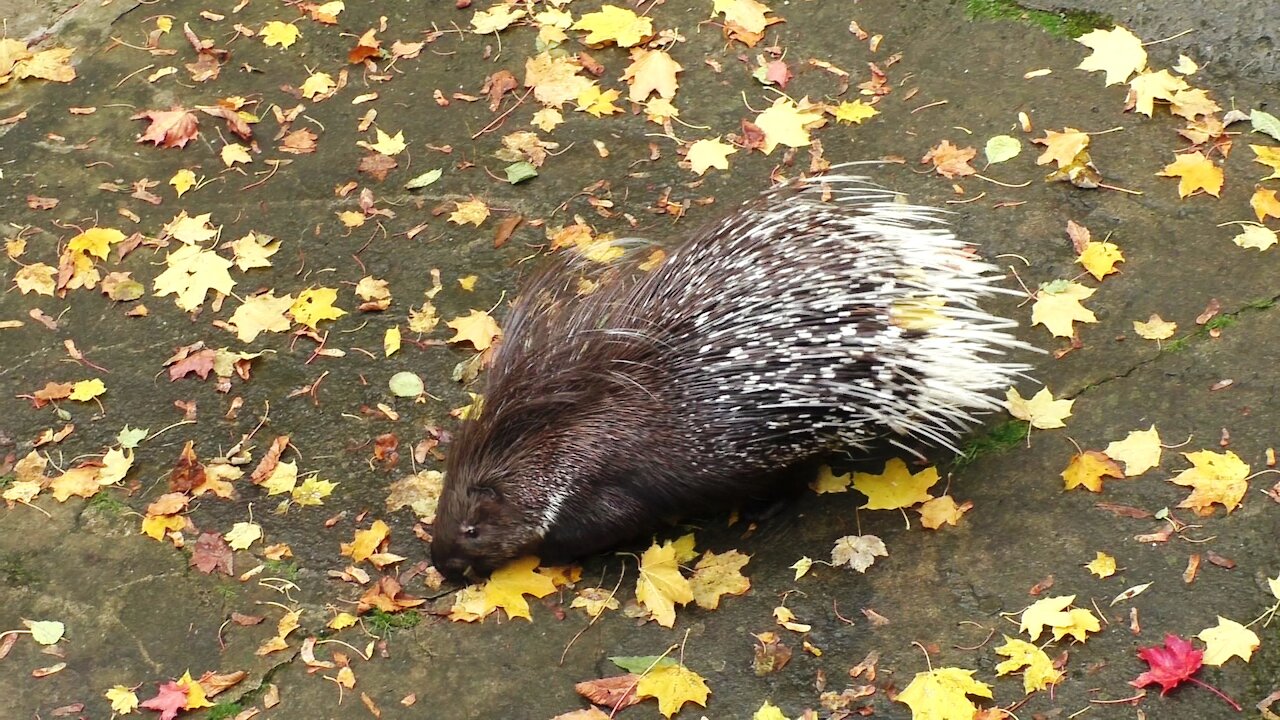Premium Only Content

Porcupine looking for a treat
Porcupine looking for a treat.
The porcupine is mainly a mountain animal that also lives in foothill plains, including cultivated ones, although it is occasionally found in sandy deserts. Settling among the rocks, the porcupine makes a lair in caves and natural depressions, in deserts-between stones; in softer soil, it digs holes that have a complex structure and are equipped with several exits. The porcupine burrow often exceeds 10 m in length, going underground up to 4 m. There are 2-3 extensions in the burrow; in one of them there is a green-lined nest. The porcupine is not particularly afraid of human proximity and often settles near villages.
The porcupine is almost exclusively nocturnal. He spends the day in a hole and comes out only after dark. the porcupine does not hibernate in winter, but in cold weather it is less active and less likely to leave the den. During the night, he can go several kilometers from his home. in the places of their transitions, porcupines leave well-marked trails. on such trails, an experienced tracker can easily find the porcupine's lair.
The porcupine feeds on plant food. In spring and summer, it eats green parts of plants, roots, bulbs and tubers. later, in the autumn, after the ripening of cultivated plants, it feeds mainly on their fruits — it eats watermelons, melons, cucumbers, pumpkins, grapes, alfalfa. In winter, it eats a lot of tree bark, gnawing on the lower parts of trees. Occasionally, apparently, to make up for the lack of salt in the body, he eats insects.
Cubs are born sighted and with developed teeth. Their needles are very soft at first, but harden very quickly and after a week are able to prick strongly. Milk feeding does not last very long — perhaps no more than two weeks.
As for the natural enemies of the porcupine, there are few of them-the quills give the porcupine excellent protection even from the tiger and leopard. When an enemy attacks, the porcupine first warns-quickly stomping its hind legs, shaking its needles, making a characteristic loud crack. If the enemy does not retreat, the porcupine stabs the pursuer with a quick short throw backwards.
Multiple wounds from porcupine quills are one of the main reasons for the appearance of cannibals among tigers and leopards in Africa and India. An animal that has run into a porcupine and received several dozen needles in its muzzle and paws cannot pull them out and becomes disabled, unable to hunt its usual prey — ungulates. In order not to die of starvation, predators can only attack people who, like ungulates, can not quickly escape from the beast that has lost its former mobility.
Because of this protection, the porcupine does not show fear of large animals. He does not give way even to the car, trying also to threaten him with needles — many porcupines die in this way under the wheels.
-
 1:09
1:09
World around us
3 years agoA man and a dog help the birds survive in the frost
818 -
 0:31
0:31
Theresagregory79
4 years ago $0.01 earnedLooking for Narnia
901 -
 0:07
0:07
natalieviola91
4 years ago $0.01 earnedDinosaur looking bird
132 -
 0:18
0:18
tfraymond
4 years agoEllen looking sultry
661 -
 8:48
8:48
Mountain Bike TV
4 years agoPorcupine Rim
934 -
 0:28
0:28
f0f0_7
4 years agocute kitten looking around
411 -
 0:44
0:44
JCFloyd
4 years agoJavalina looking for food
274 -
 0:43
0:43
thecaptain72
4 years agoRocky looking
551 -
 0:38
0:38
debchadd
4 years ago $0.01 earnedlooking for a comfy spot.
42 -
 0:27
0:27
Pastor Jimmy Proulx
4 years ago $0.08 earnedLooking Glass Falls
1.7K4